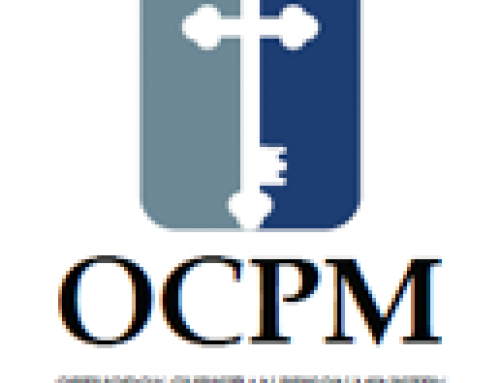This post was originally published on this site
Introduction
This month, we are learning to “Walk in the Light” with St. Athanasios the Great. St. Athanasios was the patriarch of the Church of Alexandria. He is most famous for championing the correct when the Church was battling the heresy of Arius. Arius taught that there was a time when the Father was but the Son was not, making Christ a creation of the Father. The true faith persevered and was proclaimed at the first Ecumenical Council, held in the city of Nicaea in 325 AD, which taught that Christ was “the only-begotten Son of God, begotten of the Father before all ages; Light of Light, true God of true God, begotten, not created, of one essence with the Father…”
Even after the council, Arius’ teachings lingered throughout the world and thus, we have one of the most famous pieces of Christian literature ever composed: “On the Incarnation” by St. Athanasios. In this masterpiece, St. Athanasios writes in great detail about the purpose and function of the incarnation of the Son of God, while speaking in very plain language so that all the members of the Church can understand the true faith. Today, we will read pieces of this timeless treasure and discuss them together in order that we might more clearly understand Christ and His love for us.
Before we begin our discussion, let’s begin with 120 seconds of silence. It’s been a long day. Take this chance to come into the presence of God and his saints as a group. Sit still. Breathe slowly and deeply. Say the Jesus prayer.
Part I: The Creation & Fall of Humanity
St. Athanasios begins his work about the Incarnation of Christ by first speaking about the creation of all humanity.
“Perhaps you are wondering for what reason, having proposed to talk about the Incarnation of the Word, we are now expounding the origin of human beings. Yet this too is not distinct from the aim of our exposition. For speaking of the manifestation of the savior to us, it is necessary also to speak about the origin of human beings, in order that you might know that our own cause was the occasion of his descent and that our own transgression evoked the Word’s love for human beings so that the Lord both came to us and appeared among human beings. On the Incarnation 4
He goes on to speak extensively about the different “theories” of creation that were floating around at his time. He lays down the foundation: God created all things out of nothing through His Word. He does all of this in order to remind the reader that Christ is able to save us, to “re-create” us, because He is, in fact, the same one who created us in the first place.
“As we give an account of this, it is first necessary to speak about the creation of the universe and its maker, God, so that one may with us worthily reflect that its re-creation was accomplished by the Word that created it in the beginning. For it will appear not at all contradictory if the Father works at salvation in the same one by whom he created it.” On the Incarnation 1
“You know what happens when a portrait that has been painted on a panel becomes obliterated through external stains. The artist does not throw away the panel, but the subject of the portrait has to come and sit for it again, and then the likeness is re-drawn on the same material. Even so was it with the All-holy Son of God. He, the Image of the Father, came and dwelt in our midst, in order that He might renew mankind made after Himself, and seek out His lost sheep, even as He says in the Gospel: ‘I came to seek and to save that which was lost.’” On the Incarnation 14
Here, we are presented with the most beautiful imagery. God yearned to restore us after our fall when He could have “started fresh” and just destroyed us for our lack of obedience to Him. St. Athanasios presents to us Christ as the one who loves us and comes to save us Himself. He does not send an angel, prophet, or saint to restore us, but rather, comes to us in our state of death and brings life into us once again Himself.
We love Him because He first loved us. 1 John 4:19
Discussion Questions
- What are your reactions to hearing the words of St. Athaniasus? What do you find most important? Discuss together.
- Christ comes to renew us because of His love for us. We might know this mentally but forget this spiritually. How does this impact how you see yourself, those around you, and the entire world?
- If you could make one change in light of this impact tomorrow, what would it be?
Part II: Christ our Salvation
St. Athanasios gets to the crux of the matter: Christ comes to restore us through His Incarnation. He spends a good majority of the book expanding on this since he argues that Christ doesn’t simply come to die quietly just to fulfill some obligatory death but rather, He does much more.
Christ, Emmanual, visits us. “For this purpose, then, the incorporeal and incorruptible and immaterial Word of God comes into our realm, although he was not formerly distant. For no part of creation is left void of him; while abiding with his own Father, he has filled all things in every place. But now he comes, condescending towards us in his love for human beings and his manifestation” On the Incarnation 8
Christ, the Lamb, is slain for us, putting an end to the law’s judgment over us. “For by the sacrifice of his own body, he both put an end to the law lying against us and renewed for us the source of life, giving hope of the resurrection.” On the Incarnation 10
Christ, our teacher, reminds us once more of the Father. “For what profit would there be for those who were made, if they did not know their own Maker? Or how would they be rational, not knowing the Word of the Father, in whom they came to be? For they would not have differed at all from the irrational creatures if they had known nothing more than the terrestrial animals. And why would God have made those by whom he did not wish to be known?… So, lest this should happen, being good he bestowed on them of his own image, our Lord Jesus Christ, and made them according to his own image and according to the likeness, so that understanding through such grace the image, I mean the Word of the Father, they might be able to receive through him a notion of the Father, and knowing the Creator they might live the happy and truly blessed life.” On the Incarnation 11
Christ, our Savior, redeems us as He destroys death by His resurrection. “Indeed, with the common Savior of all dying for us, we, the faithful in Christ, no longer die by death as before according to the threat of the law, for such condemnation has ceased.” On the Incarnation 21
Christ, our King, protects us. “And like as when a great king has entered into some large city and taken up his abode in one of the houses there, such city is at all events held worthy of high honor, nor does any enemy or bandit any longer descend upon it and subject it; but, on the contrary, it is thought entitled to all care, because of the king’s having taken up his residence in a single house there: so, too, has it been with the Monarch of all. On the Incarnation 9
For St. Athanasios, the entire life of Christ—each and every detail—is purposeful and works to save and restore us.
Discussion Questions
- How does St. Athanasios’ understanding of Christ’s incarnation and work of salvation change how you understand Him?
- While many of us are quite intimidated when we hear “Church Fathers”, “Patristics”, “Theology”, etc, how has this exercise of reading all of these quotes been? Discuss.
- What stood out to you about these passages?
- What questions has this conversation raised for you?
- Is there anything you’re still wondering about?
Concluding Prayer
“The Dying Prayer of St. Athanasios
Thou art Jesus, the Son of the Father, Yea, Amen.
Thou art He who commandeth the Cherubim and the Seraphim, Yea, Amen.
Thou hast existed with the Father in truth always, Yea. Amen.
Thou rulest the Angels, Yea, Amen.
Thou art the power of the Heavens, Yea, Amen.
Thou art the crown of the Martyrs, Yea, Amen.
Thou art the deep counsel of the Saints, Yea, Amen.
Thou art He in whom the deep counsel of the Father is hidden, Yea, Amen.
Thou art the mouth of the Prophets, Yea, Amen.
Thou art the tongue of the Angels, Yea, Amen.
Thou art Jesus my Life, Yea, Amen.
Thou art Jesus the object and boast of the world, Yea, Amen.
(A.W.T. Budge, Coptic Homilies in the Dialect of Upper Egypt, [The Dying Prayer of St. Athanasios, Archbishop of Alexandria, pp. 1012-1020])
Protopresbyter George Dion Dragas: According to this text, which is based on the personal witness of his Archdeacon, who stood by him at the moment of his departure from the present life, and was uttered shortly before he delivered his sanctified soul to the angels who came down to receive it, recalls the entire course of the divine economy for the salvation of mankind and concludes with a doxology to the Lord Jesus Christ. (Saint Athanasios: Original Research and New Perspectives, pg. 204)”
Copied from https://classicalchristianity.com/2011/10/15/the-dying-prayer-of-st-Athanasios/
Icon by Father Matthew Garrett



